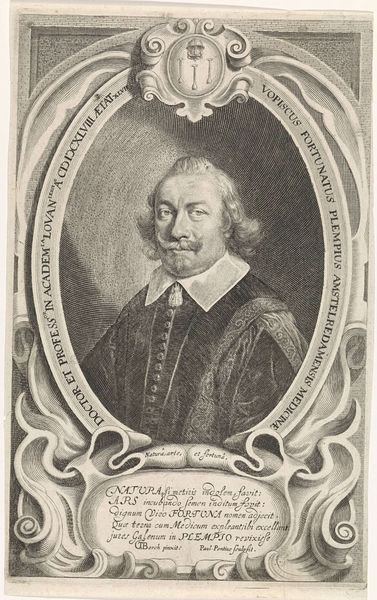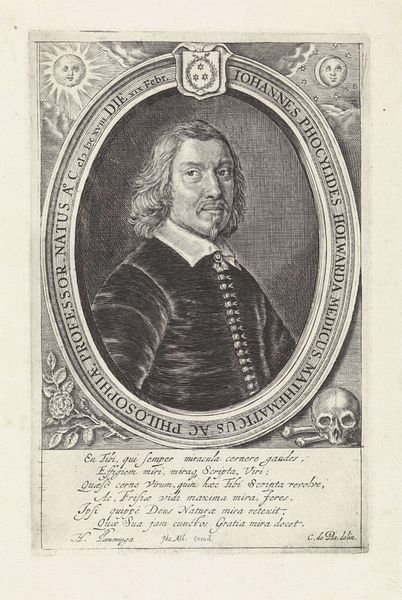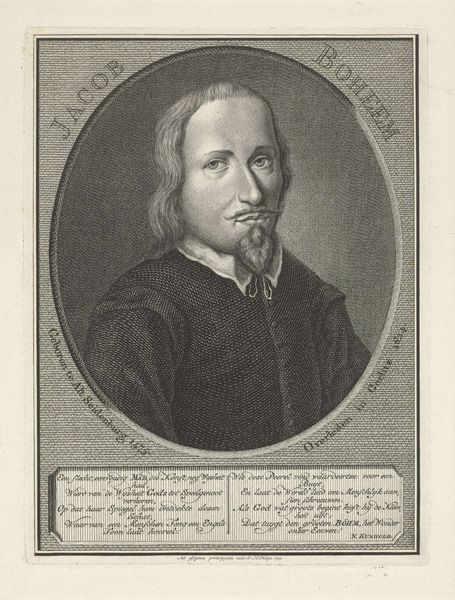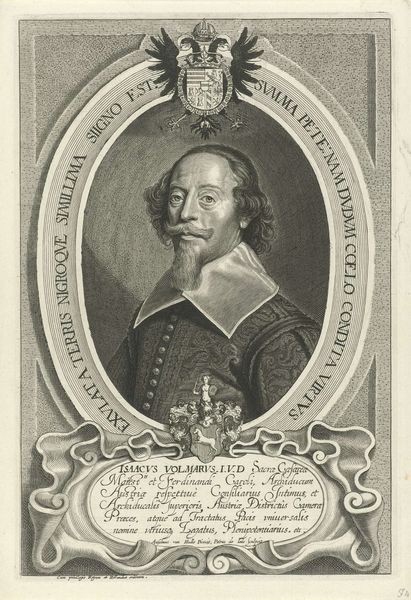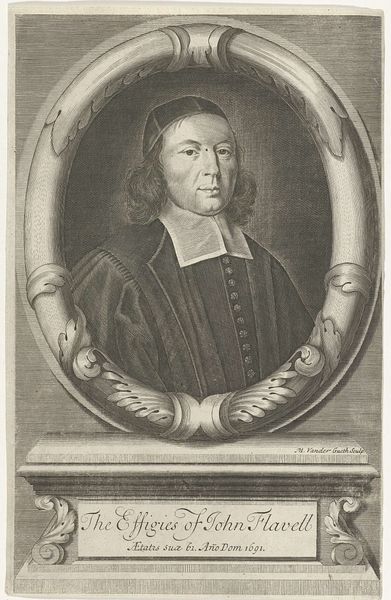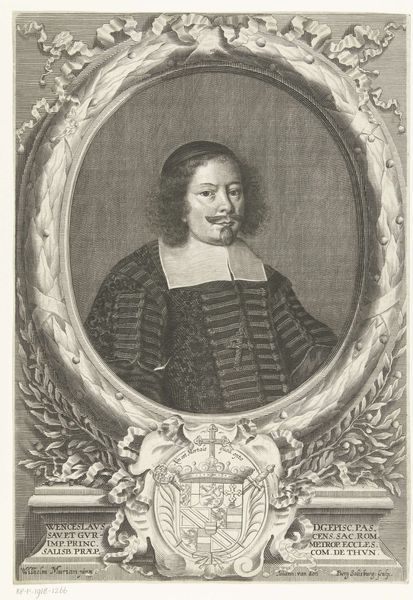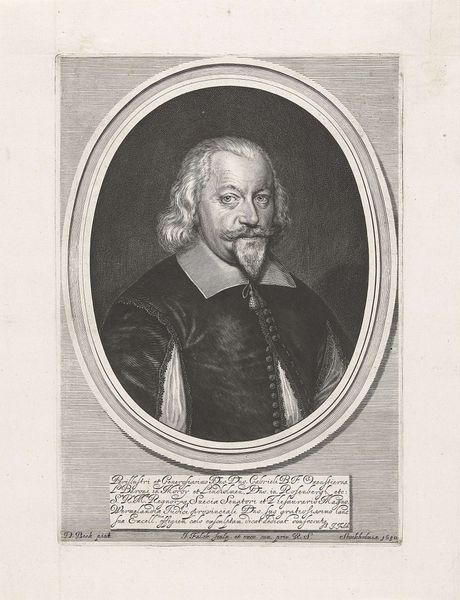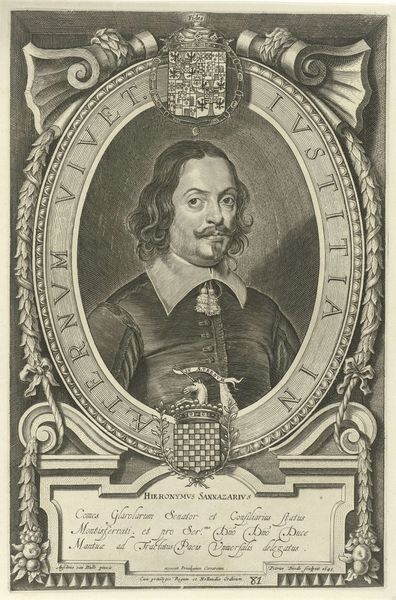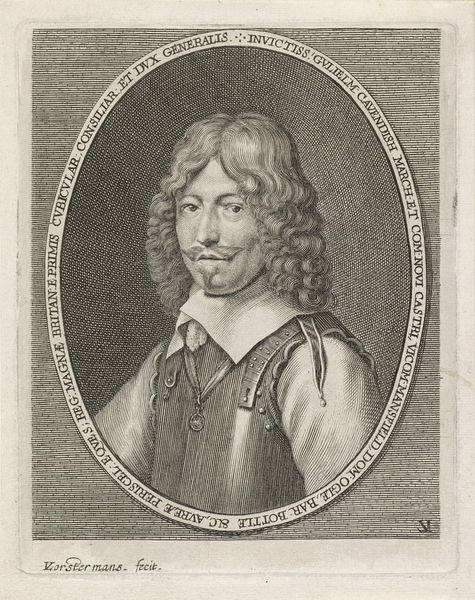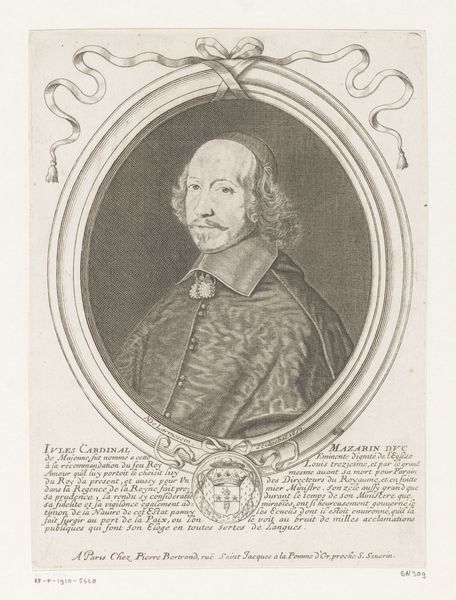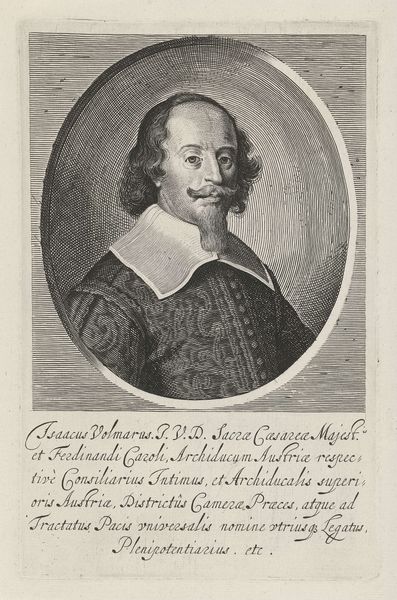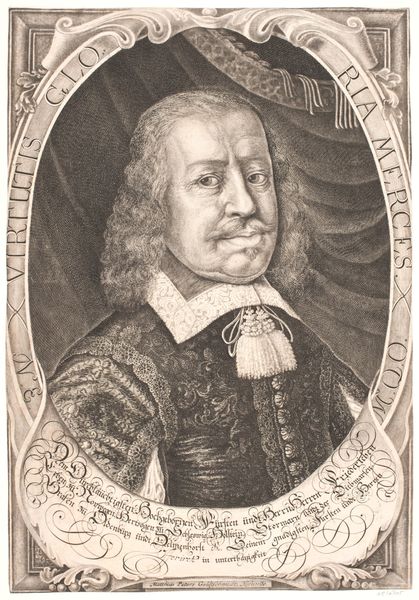
print, engraving
#
portrait
#
baroque
#
dutch-golden-age
# print
#
charcoal drawing
#
historical photography
#
history-painting
#
engraving
Dimensions: height 267 mm, width 171 mm
Copyright: Rijks Museum: Open Domain
Curator: This print, dating from 1643, is a portrait of Vopiscus Fortunatus Plempius, created by Theodor Matham, currently held in the Rijksmuseum collection. It’s an engraving, capturing Plempius in that characteristic Baroque style, wouldn’t you agree? Editor: My first thought? Oh, what a splendidly serious face! I can almost hear him lecturing. The formality is just radiating from this fellow. That frame too; ornate! Curator: Right, Plempius wasn't just anyone; he was a distinguished professor, and Matham really emphasizes that with the elaborate detailing and Latin inscriptions surrounding the portrait. There’s a tension, I think, between individual identity and the representation of institutional power, and these trappings of academic and professional identity highlight the way learned individuals used visual cues to enhance and signal their power. Editor: True, but there's a delightful contrast, isn't there? The formal outer trappings box this intriguing figure, almost cheekily winking! He's both, you know? The imposing intellectual and this very human individual peeking through the meticulously etched lines. Curator: I’m glad you brought that up. Considering the period and its rigid social structures, it's easy to read these formal portraits merely as straightforward endorsements of status, but there's often so much more going on, especially in the nuanced play of light and shadow across his face. I mean, it’s subtle subversion but subversion nonetheless. Editor: You know what's tickling me? This feels intensely personal to Matham. It has that sense of the engraver and the, erm, "engravee" in quiet conversation across time. What was their connection I wonder? A commission or a knowing glance between intellectuals? It's got me imagining worlds, you know? Curator: A commission would certainly have been standard, but perhaps, yes, there was some personal resonance. As you say, the work allows for that space, the space for intimate readings, pushing against overly simplified narratives of power and representation of scholars. Editor: And that, my dear friend, is why this old print still manages to surprise, delight, and whisper across the centuries. Curator: Indeed. Its ability to simultaneously uphold and subtly question power makes it perpetually relevant, doesn’t it?
Comments
No comments
Be the first to comment and join the conversation on the ultimate creative platform.
